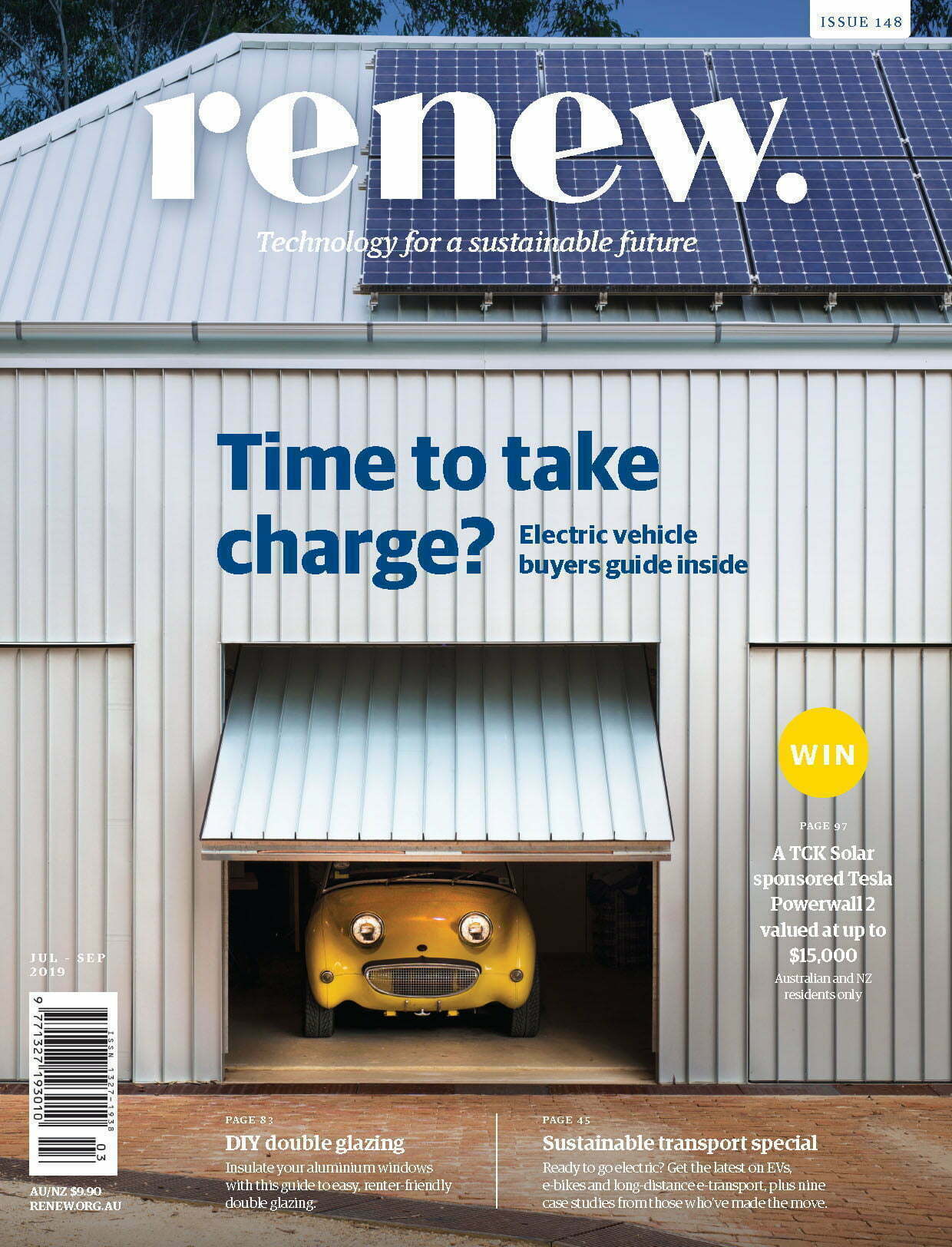I love to ride my (electric) bicycle
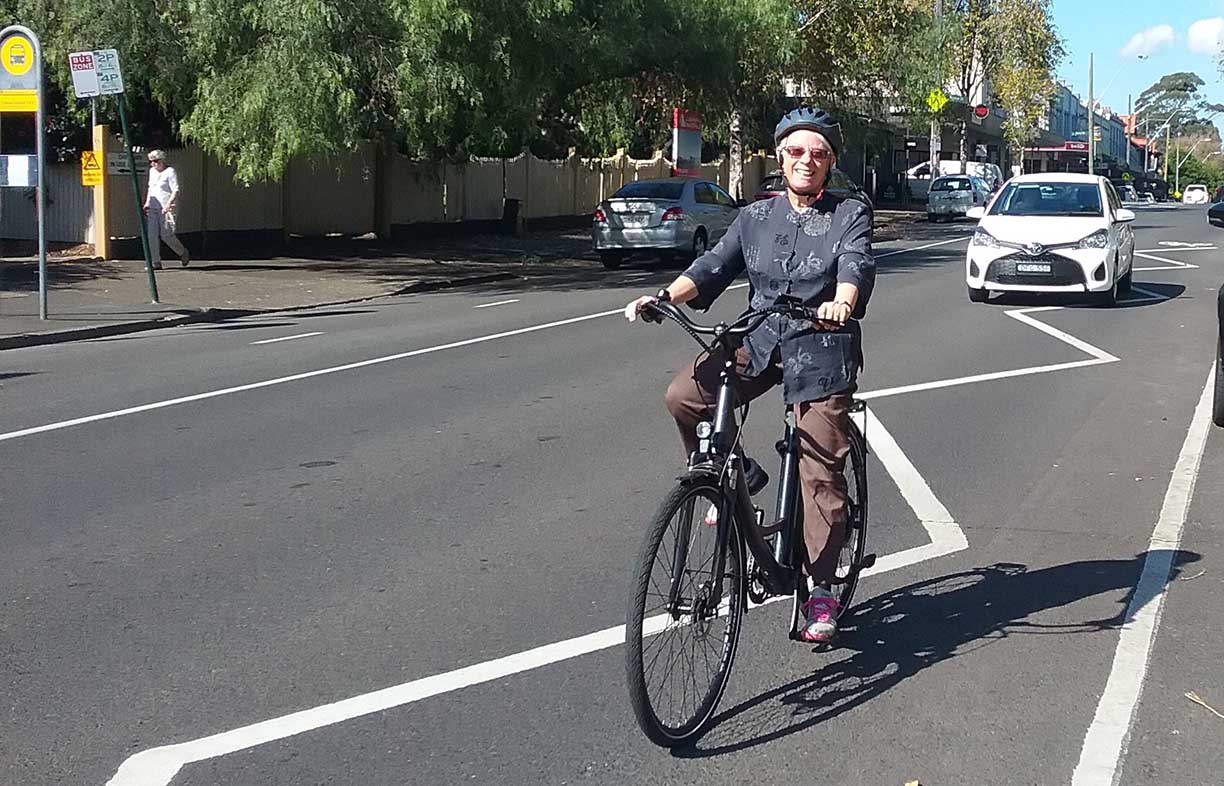
Across the inner suburbs of Australia’s major cities there is a growing number of people swapping the car and making an electric bike their vehicle of choice for the daily commute. Two electric bike owners explain why they love them.
E-bike as part of a no-car toolkit
Laurie Miller bought herself an e-bike as a retirement present, and finds she chooses riding for many trips she’d otherwise use a bus or a taxi for.
My first experience with an e-bike was in the very hilly region of Sintra, Portugal, while on vacation in 2017. On that day, my husband and I rented e-bikes and found the ease with which we conquered the hills there miraculous! Home in Sydney, I bought a Velectrix Urban 2Plus e-bike (which cost $1995) in January 2018, as a retirement gift to myself. Previously, I used a regular bike or depended on walking, public transport or taxis, as we don’t own a car; I’ve always lived in cities and have never felt the need for one.
I got to test ride several e-bikes for a few blocks around the shop (Sydney Electric Bikes in Pyrmont) and even borrowed two overnight to test ride longer distances. This was very easily organised and the shop was very helpful. I chose the Velectrix because of the ease of removing the battery and the comfort of the ride. I was not completely pleased with its overall size, as I wanted a slightly smaller frame, but they did not have a smaller frame bicycle that I liked as well.
I chose from the bottom of the range (cost wise) and this means that I might have sacrificed a bit on the initial pick-up ‘umph’ of the bike (it requires a pedalling revolution or two for the electrics to kick in—this can make it hard if starting on an up slope) and also on how well it manages the steepest of hills.
For me, the e-bike replaces some trips using my regular bike, buses and taxis, though is not a complete replacement for any of them. It’s mainly used for journeys that involve longer distances, hills or multiple destinations. I have also used it for hauling fairly heavy boxes. I like to use it for pleasure riding on the weekends once in a while.
Using the e-bike has been revolutionary for me. Biking is more fun and much less effortful. I can enjoy my surrounds and also watch out for traffic better because the pedalling is not taking all my concentration and effort. I arrive at my destination much more relaxed and not covered in sweat. The bike has five levels of assistance, so when I come to a hill I use them and need put no more effort into the pedalling than I would on the flat. It turns Sydney into the Netherlands! It certainly makes me choose biking to places that I would have otherwise taken a bus or taxi to, and I only use my regular bike about half a dozen times a month now, for short trips.
The e-bike is generally excellent on hills, though I have had it sort of stall once or twice on the very steepest of grades. It has taken me a bit of time to understand how to pedal and use the gears to avoid this. It also took me a bit of time to work out how to turn on the lights (which come with the bike) and work the speedometer, because I was not given any instructions on those things.
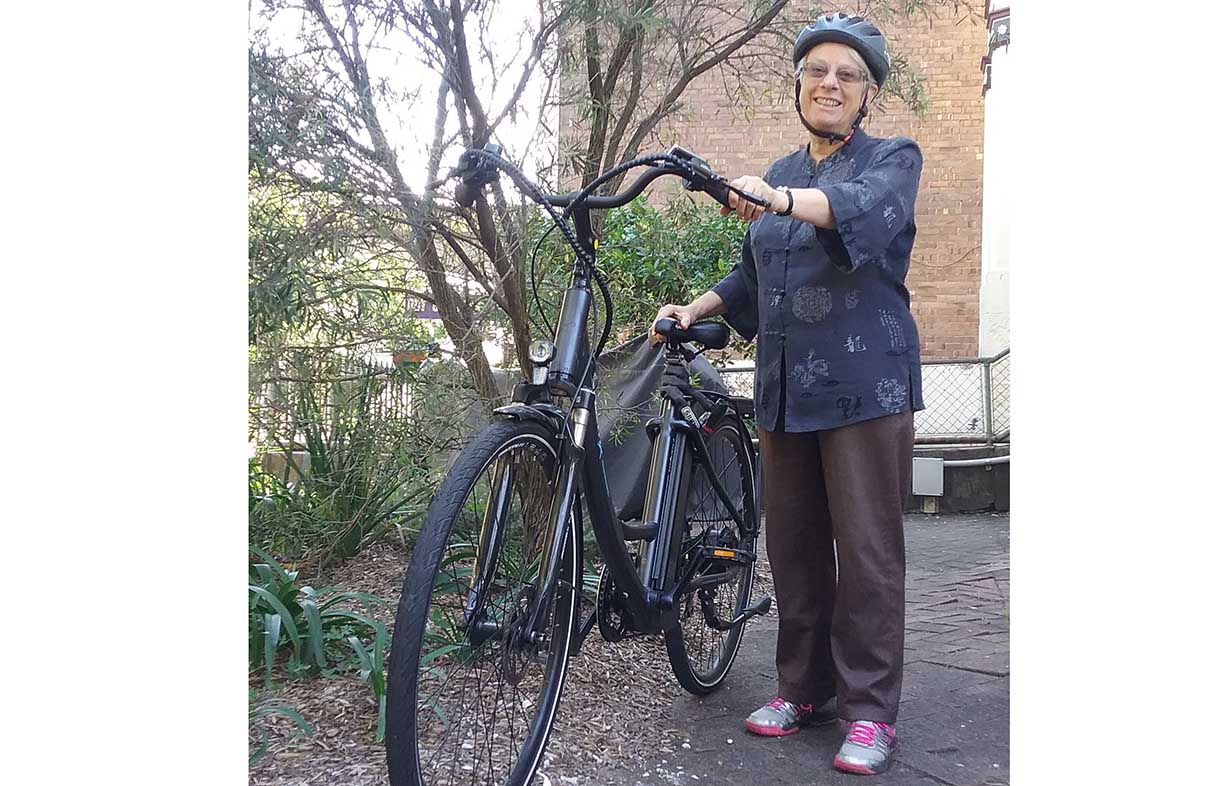
As for charging, I find I only need to charge it about once a month (after using it for about eight rides). It takes several hours. It is easy to remove the battery from the bike I have, bring it inside and plug it into the charger. I haven’t ever run out of charge on a ride. It is easy to see how much charge you have remaining, to avoid this. The bike is heavier than my regular bike and is definitely harder to pedal if not switched on.
Because of its weight, especially with the battery in place, my e-bike is more difficult to carry up or down stairs than a normal bike. Initially, I thought I’d carry it up two flights of stairs to my apartment, but that only lasted about two days! Luckily I was given some room in a shared garage by my landlord. Even so, it takes me a bit of effort to get it out of the garage as I have to carry it up and down a few steps, so sometimes it just feels easier to use some other means of commuting. It’s a minor niggle for me, but if you’re thinking about an e-bike, I’d recommend considering the weight and where you’ll be storing it.
The battery itself is rather large, so although at first I was removing this and taking it with me to prevent it being stolen when the bike was parked somewhere, I am now less vigilant about this and simply leave the battery locked onto the bike (and the bike locked up with a good lock). I am also sometimes a bit concerned about where I will be able to park my e-bike at my destination, given its value.
Help on Hobart’s hills
Helen Thomson added a folding electric bike to her transport options to help tackle Hobart’s hilly terrain.
I got my e-bike—a Citymotion e20, which cost around $2000—in March this year after a lengthy research period. It wasn’t all that easy. Tasmania doesn’t have a great many purveyors of e-bikes, let alone folding ones (which was a non-negotiable feature for me, as I wanted it to be portable on public transport). So I did some tyre-kicking on a couple of different trips to Melbourne for work, as well as a bunch of online research. Test rides, once I was in Melbourne, were easy to organise, and the shop I eventually went with (Electric Bike Superstore in Malvern) was incredibly helpful in many different ways, including shipping to an agent very close to where I live.
I use my e-bike for riding to and from work and other in-town commitments, from my home in the northern suburbs of Hobart, an 18 km ride. The electric aspect is particularly excellent for negotiating the otherwise rather punishing topography of certain bits of Hobart (the foothills of Mt Wellington!)
With a little practice, the folding is not too difficult, though there are traps for young players: for example, if you unfold the handlebars after unfolding the body, you can end up in a situation where the cranks and the handlebars somehow get in each other’s way. It can be wheeled folded, but not very easily; carrying it is not super easy either as it’s pretty angular and, with the battery weighing a significant amount, it’s on the heavy side, around 25 kg all up. But from time to time it’s worth folding it up and lugging it, and the bike is also compact enough that it fits in many cars with only the handlebars and seat collapsed. I fold my bike to get to out-of-the-way places (like the trailhead of the North South Track, halfway up Mount Wellington. I can report that this is not a great idea in or after wet weather, with 20-inch wheels—but I did it!). And in situations where I don’t much fancy the 18 km ride home from the city and have a friend who’s willing to drive me, I can fold my bike and change my plan on a whim. In the long term, I hope to build a Tiny House on wheels and agist it somewhere in the Huon Valley or Channel area, and use the e-bike to get to the closest bus stop to access the city.
The motor on this e-bike is not massive, and so the amount of pedal assist it provides in extreme situations is not huge. Having said that, combined with using low gears, it does make the difference between certain slopes being impossible and just rather challenging, which is actually exactly what I was after. I still want to get exercise; I just want the really tough bits to be a bit less punishing. I almost never use the throttle as an independent means of providing power, preferring to use a certain amount of pedal assist—less on the Intercity Cycleway (which is flattish); more on the hills of West Hobart (which decidedly aren’t).
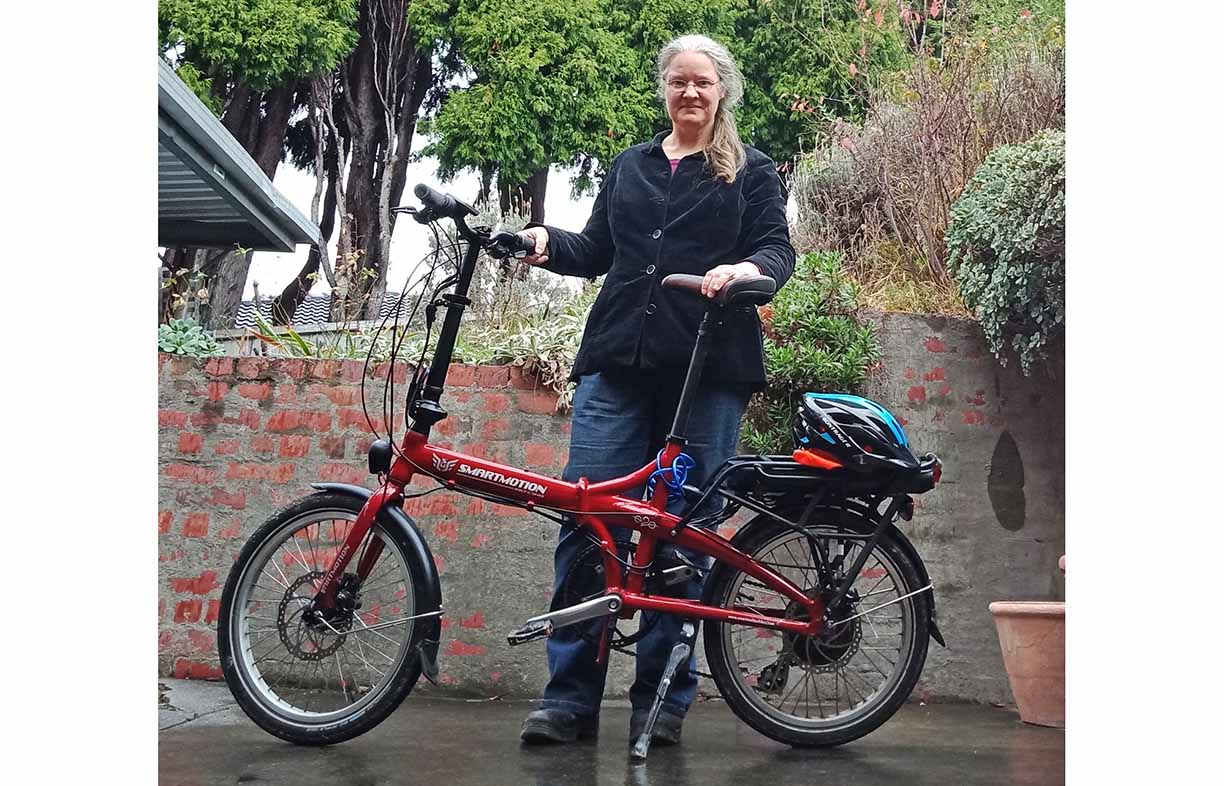
One of the main tests I did on the e-bike before I bought it was to ride it unpowered, because I did not want to risk a situation where I ended up with an unrideable bike if my battery ran out. It hasn’t yet happened to me; I assume if it does it won’t be fun, but I am sure it will be survivable. The expected powered range of the battery is, I believe, somewhere around 50 km, but how much battery you actually use is highly dependent on terrain and the amount of pedal assist you use. I have only ever come close to exhausting the battery once, and I believe that ride was close to 80 km and involved some wicked Hobart hills.
I tend to charge after each ride. It seems to take only a couple of hours, even when the battery is reasonably deeply discharged. It’s extremely easy—I charge it in place on the bike in my shed.
I still have my car for when I need to haul heavy things or large and delicate musical instruments. Also, my standard ride into town is 45 minutes one way, so if the weather is sufficiently nasty I do still drive. I still own a standard push bike as well. So my idea for the e-bike was not to replace my existing transport options, but to have a broader array of appropriate options. Eventually I am thinking of trading in my hatchback for a ute which can double as something useful for decent haulage, and something I can slide a camper onto.
Further reading
 Transport & travel
Transport & travel
Petroleum is fast becoming a dirty word
John Hermans explains the negatives of the petroleum industry.
Read more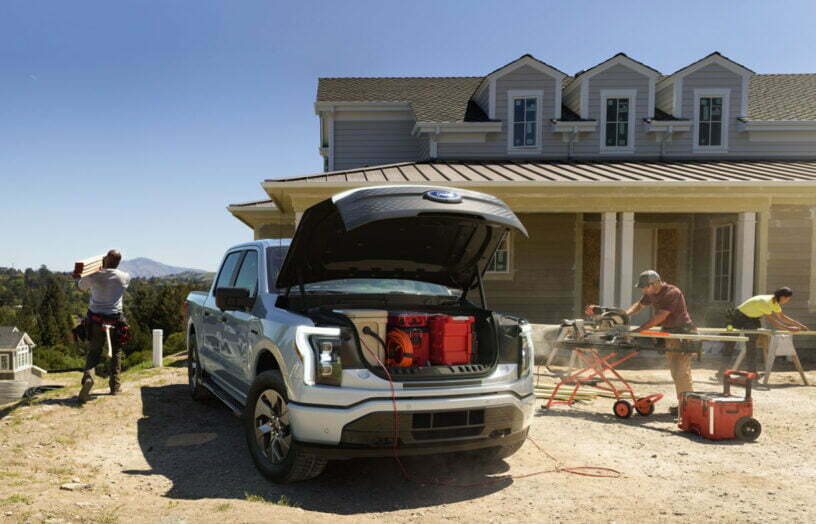 DIY
DIY
Bring on the electric ute
Bryce Gaton asks, will 2023 be the Australian ‘Year of the electric light commercial vehicle’?
Read more Transport & travel
Transport & travel
Biofuel vs battery
John Hermans gives his opinion on the best power source for electric vehicles.
Read more

